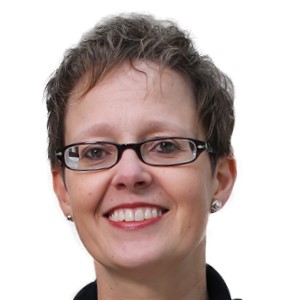In the UN Global Compact, social sustainability is defined as the impact a business has on people, either directly or indirectly. However, the simplicity of this statement is deceptive when you consider the breadth of potential duties an organisation may be expected to bestow on its employees, customers and communities in these bewildering times.
There’s little doubting that social sustainability has shot up the agenda in Boardrooms over the last decade – not least due to the rise of social media and the potential for businesses to be exposed to high levels of scrutiny over mistakes – but the current cost-of-living crisis has led to executive and non-executive directors asking if they can do more to support stakeholders.
We are also witnessing a confluence of economic turbulence and rapidly changing societal expectations. People want to see more diverse senior leadership teams and workforces, greater accountability when things go wrong and meaningful change as opposed to mere box ticking. Within this maelstrom, business leaders must decide the order of priorities for social sustainability. How do you balance purpose against profit?
During Criticaleye’s recent sustainability-focused CEO Retreat, held in association with Accenture and Salesforce, Chief of Staff and Group Director for Sustainable Business at Lloyds Banking Group,
Janet Pope, discussed the process of arriving at purpose-driven Board decisions, particularly in the current context whereby all stakeholders are feeling the pinch.
“We’ve thought about ring-fencing bits of the balance sheet for our poorer customers to make sure they still have access to affordable mortgage financing,” Janet said. “And as times started to get tough, we decided to do something on employee pay. We ended up giving every colleague £1,000 to tackle rising bills. It was about trying to make sure that colleagues can feel comfortable despite the challenging environment.”
The wide-ranging challenges arising from the pandemic also served to underline and strengthen the importance of protecting employees in times of immense uncertainty.
Lynne Embleton, CEO of Aer Lingus, said: “I took the CEO job in the depths of the pandemic. We were losing a million pounds a day, so my primary director's duty was to keep the company solvent, but what really struck me was our responsibility to our people.”
It was an incredibly testing time for furloughed staff, and it remains a challenging period, but Lynne said there is still a lot of work being undertaken to engage with employees. “This is when it comes back to purpose,” she explained. “If we can unite around our sense of purpose in society, doing it in a socially and environmentally responsible way, that's the way we can get our mojo back.”
Deepening the D&I Conversation
Diversity and inclusion (D&I) was another key area of discussion during the Retreat. The concept of broadening the diversity of Board and staff rooms has been discussed for many years, yet progress feels slow and profound shifts remain difficult to obtain in many instances.
Joe Vorih, CEO of Genuit Group, said: “You have to start at the top and the bottom of the organisation. First, you have to educate and encourage the hiring managers to appreciate the value of diversity. And then you have to expand to a more diverse pool of applicants to give those people a chance to apply and get those jobs.
“D&I consultants will tell you that the first thing to do is remove unconscious bias from the minds of your managers and from your job descriptions,” Joe continued. “It sounds easy to make simple changes to the wording of a job description, for example, but it takes a lot of training and alignment.”
The benefits of a more diverse leadership team soon become clear to those that have them, according to Janet. She said: “We've seen that the quality of decision-making has increased enormously because there are different agendas that scoop up many more types of issues.
“It’s hugely important to try and look like the customer base that you're serving. This is why we became the first FTSE company to declare targets for women and senior women in 2014, and then for black, Asian and ethnic minority colleagues in 2017.
“We've gone from women resembling 27 percent of senior management in the organisation to 39.1 percent now. With ethnic minority colleagues we’ve gone from 6.5 to 12.9 percent. It's been an amazing journey and we've achieved it because every single person's compensation has been driven by the success of changing the complexion of the workforce.”
Making it Happen
Much of the conversation was centred on how Boards can enact meaningful change across different areas of social sustainability, what techniques can be utilised and what approaches are available to chief executives.
Matthew Blagg, CEO of Criticaleye, commented: “Chairs and non-executive directors increasingly understand that the ‘S’ of ESG is now a business-critical issue. There have to be clear outcomes for how an organisation operates, with transparency and accountability, so that this isn’t simply a box-ticking exercise.”
In terms of tools, business leaders have been somewhat bombarded by a plethora of ESG standards and frameworks, including the UN Global Compact’s Ten Principles and the Sustainability Accounting Standards Board (SASB) to name two.
Manoeuvring through this sustainability standards minefield resembles a task-in-itself, but there is a huge opportunity to be grasped for those companies which devise a strategy and embark on a journey of reporting and independent assessment.
“This all becomes more real when you have a labour or a skills shortage and, all of a sudden, it's really important to have an amazing employment proposition in order to retain people and not have a 20 percent turnover rate and all the costs associated with that,” commented
Richard Gillies, former Chief Operating Officer at Simplyhealth.
Richard went on to introduce the idea of ‘Scope 3 for Social Responsibility’ – referring to the idea of setting targets for understanding and mapping social responsibilities right across the value chain of a business in the same way that many enterprises are currently doing to track their carbon emissions.
“We find it incredibly difficult already to articulate, understand and employ strategies for ‘Scope 1 Social Sustainability’. Then you consider there could be four million people in the wider supply chain of a larger business, who are potentially much more vulnerable, because the base level is not so well defined, and the regulations and infrastructure are not there to support those people.
“As we all sit here today with supply chain disruption, we've suddenly realised how critical to the resilience of our business, and to the future prosperity of our business, those supply chains are. For me, it’s hugely important to get social sustainability on the agenda to start a baseline for businesses who may not be doing anything yet.”
Throughout the conversation on social sustainability, business leaders at the CEO Retreat agreed that the ‘S’ in ESG is the least well defined – despite the simple explanation offered by the UN Global Compact. This demonstrates a need for Boardrooms to elevate the social aspect of their responsibilities up the agenda of priorities, setting clear definitions, categories and goals related to the sweeping arena of social sustainability, and to commit to appropriate standards to improve their status.
Perhaps most key in all this is the notion that the benefits of a contented and diverse workforce, fulfilled customers and a valued community will surely extend through to the bottom line of any socially sustainable business.
Jacob Ambrose Willson, Senior Editor, Criticaleye



